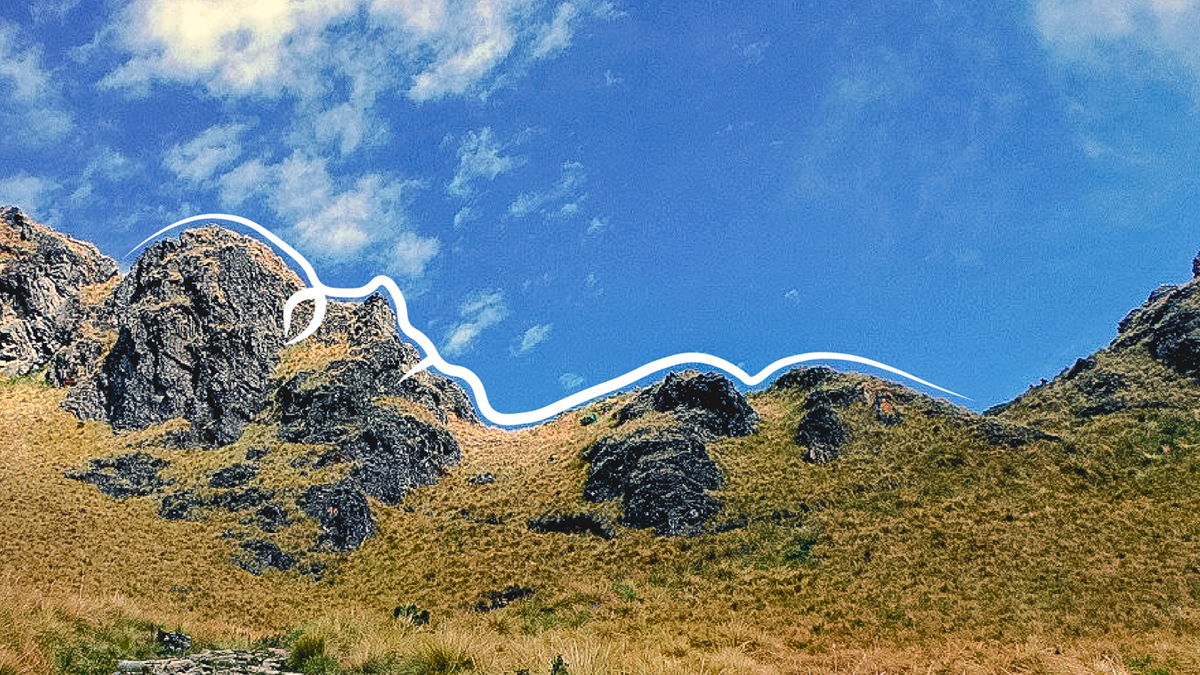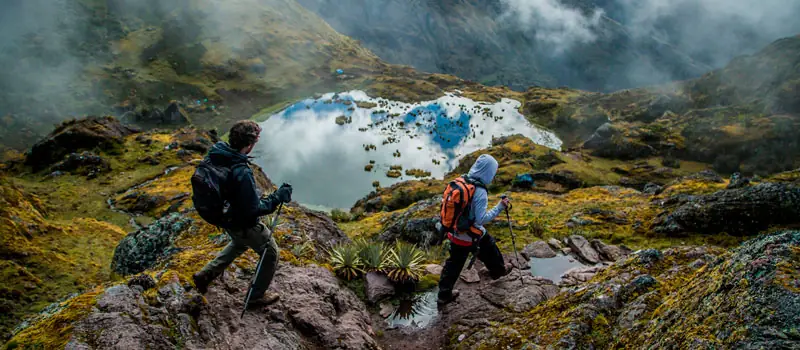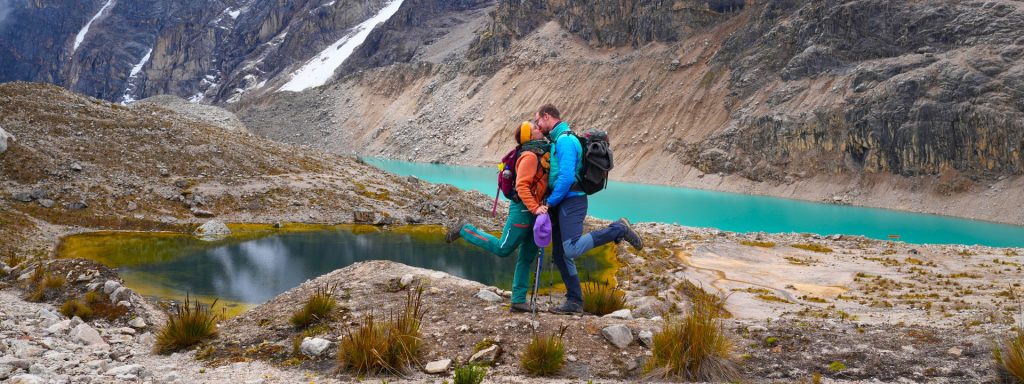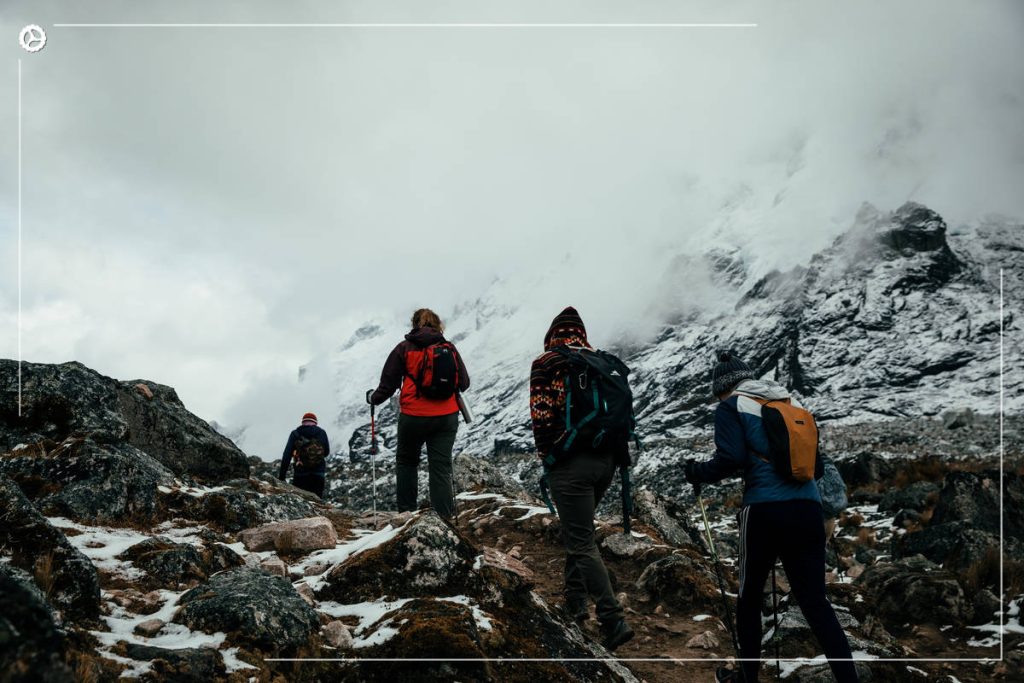The Inca Trail is a renowned hiking route that leads to Machu Picchu, an ancient Incan city. It offers stunning landscapes, rich history, and a unique cultural experience for trekkers. This trail features various sections with significant elevation changes, ancient ruins, and diverse ecosystems. Planning is essential for a successful trek, including permits, training, and understanding the route options.

Overview of the Inca Trail Trek to Machu Picchu
The journey to Machu Picchu through the Inca Trail offers breathtaking views and rich cultural heritage. This iconic hike encapsulates the spirit of the ancient Incan civilization, showcasing stunning landscapes and unique archaeological sites.
Location and Elevation Along the Trail
Situated in the Peruvian Andes, the trail spans a variety of elevations, presenting both challenges and rewards for hikers. Starting from a point at approximately 2,600 meters (8,500 feet) above sea level, it quickly ascends to the highest point, Warmiwañusqa, at over 4,215 meters (13,800 feet). The elevation profile along the route is marked by:
- Starting point at Kilometer 82, with a gradual incline
- Reaching Wayllabamba, where hikers rest at around 3,000 meters (9,842 feet)
- Climbing sharply to Warmiwañusqa Pass, presenting a breathtaking, albeit strenuous ascent
As the journey progresses, the trail meanders through lush forests and spectacular mountain vistas, emphasizing both its natural beauty and cultural significance.
Key Ruins and Sites Along the Route
Throughout the trek, numerous Incan ruins can be explored, each revealing insights into the ancient civilization. Significant sites include:
- Sayacmarca: A well-preserved archaeological site featuring impressive stone structures and stunning views.
- Phuyupatamarca: Known as the “Town in the Clouds,” this site offers spectacular panoramas and evidence of advanced Incan architectural techniques.
- Intipata: Terraced agricultural areas that demonstrate the Incas’ innovative farming methods.
These ruins serve as a testament to the ingenuity and cultural richness of the Inca civilization, providing a profound connection to the past.
The Pass of the Dead Woman (Warmiwañusqa) and Other Highlights
Warmiwañusqa, or the Pass of the Dead Woman, is the highest and most challenging point on the Inca Trail. Hikers are rewarded with breathtaking views that extend across the landscape, showcasing the diverse ecosystems of the region. The pass is characterized by:
- Steep ascents and descents, requiring physical endurance and mental fortitude
- A panoramic view of the surrounding Andes, offering stunning photo opportunities
- A sense of accomplishment as trekkers conquer this significant landmark
Other highlights include the enchanting sights of cloud forests, rugged cliffs, and vibrant flora and fauna. Each section of the trail tells a story, guiding trekkers through the rich tapestry of nature and history. Observing the changing environment fosters a deeper understanding of the diverse Andean ecosystems and the significant influence of the Incas on this land.

Planning Your Inca Trail Hike from Cusco
Proper planning is crucial for a successful hike on the Inca Trail. Understanding the starting points, route options, and necessary preparations can significantly enhance the trekking experience.
Starting Points and Route Options
Choosing the right starting point and understanding the available routes is essential for hikers tackling this iconic journey.
Classic Inca Trail from Kilometer 82
The Classic Inca Trail typically begins at Kilometer 82, an easily accessible point from Cusco. This section of the trail sets the stage for a breathtaking experience as hikers traverse diverse landscapes and ancient ruins. The trek usually lasts four days, culminating at Machu Picchu and is renowned for its cultural and historical significance.
Short and One Day Inca Trail Options
For those with time constraints, there are shorter hikes available. The One Day Inca Trail offers a condensed version of the trek, allowing hikers to experience the highlights in just one day. This option is perfect for travelers who wish to fit in this adventure into a packed itinerary without missing out on the essential aspects of the trail.
Salkantay Trek via Mollepata (alternative to the Inca Trail)
The Mollepata route is the longest of the main paths, providing a less crowded alternative while still delivering stunning views and cultural encounters. This trek generally takes five to six days and reaches elevated areas that can yield spectacular panoramas of the Andes.
Best Time to Hike and Weather Considerations
Timely planning of the trek involves understanding the optimal conditions for hiking. The Inca Trail experiences two primary seasons: the dry season (May to September) and the wet season (October to April).
- Dry Season: Ideal for trekking. Expect clear skies and stable weather, making hiking more enjoyable.
- Wet Season: Frequent rainfall can make trails muddy and conditions challenging, though it attracts fewer tourists.
Required Permits and How to Secure Them
Obtaining the necessary permits is essential for legally traversing the Inca Trail. Hikers must book well in advance due to high demand and limited availability.
Permit Availability and Government Regulations
The Peruvian government regulates the number of hikers on the trail to protect the natural environment. A maximum of 500 permits are issued daily, which includes support staff such as guides and porters.
Booking Process Through Accredited Tour Operators
Book permits only through accredited operators. Permits are limited, tied to your passport, non-transferable, and often sell out months ahead—especially May–September and holiday weeks (the trail closes in February). When you reserve with Conde Travel, we check live availability, register your legal name and passport exactly as printed, and purchase the permit on your behalf. If your passport will change before the trek, we advise on using a temporary number and updating later. We also align your Machu Picchu entry circuit and optional Huayna Picchu/Machu Picchu Mountain tickets with your arrival time from Inti Punku. Booking several months in advance secures your dates and avoids last-minute itinerary or price changes.
Physical Preparation and Altitude Awareness
Physical fitness is crucial when preparing for the Inca Trail. Hikers should begin training several weeks in advance to build stamina and strength.
Coping with Elevation Changes
The Inca Trail reaches altitudes exceeding 4,200 meters (13,800 feet). As such, acclimatization is key for a successful and enjoyable experience.
Preventing and Managing Altitude Sickness
To mitigate the effects of altitude sickness, gradual ascent is recommended. Staying hydrated, resting frequently, and being aware of symptoms can aid in coping with altitude changes. Having a knowledgeable guide can also provide critical support in recognizing and addressing any potential health issues during the trek.
What to Expect Each Day on the Classic Inca Trail
The Classic Inca Trail offers a breathtaking journey through diverse landscapes, ancient ruins, and rich cultural history. Each day presents unique challenges and rewards, making for an unforgettable adventure.
Day One: From Cusco to Wayllabamba Camp
The hike begins with an early departure from Cusco. The initial leg of the trek leads adventurers on a well-marked trail that weaves through the beautiful Andean landscape. This day typically ends at the Wayllabamba Camp, providing a cozy place to rest.
Terrain and Elevation Gain
As trekkers navigate the first day, they will ascend to approximately 3,300 meters above sea level. The trail starts gently, allowing hikers to acclimatize while traversing lush valleys and hills. The elevation gain becomes more pronounced as the day progresses, culminating in breathtaking vistas.
Early Ruins and Scenery
Along the way, various small ruins can be explored, such as Llactapata. These remnants offer insight into the Inca civilization and set the tone for the days to follow. Scenic views of the surrounding mountains and valleys add to the day’s beauty.
Day Two: The Highest Pass and Descent to Pacaymayo
Day two is often regarded as the most challenging stretch of the trek, given the strenuous ascent required to reach the Warmiwañusqa Pass.
Warmiwañusqa Pass Details
After a hearty breakfast, trekkers embark on a steep climb to the Warmiwañusqa Pass, peaking at an elevation of 4,200 meters. The effort is rewarded with panoramic views of the surrounding peaks and valleys, a perfect backdrop for capturing memorable photographs.
Flora, Fauna, and Climate Zones
During the ascent, hikers traverse different climate zones that showcase a variety of flora and fauna. From high-altitude grasses to bustling cloud forests, the ecosystem shifts noticeably, presenting unique wildlife observations along the trail.
Day Three: Ruins Exploration and Cloud Forest Trek
This day combines culture and nature, as trekkers visit some of the most significant archaeological sites on the trail.
Sayacmarca and Phuyupatamarca Sites
The journey leads to Sayacmarca, a well-preserved Inca ruin that provides incredible views. Following this, trekkers head toward Phuyupatamarca, an archaeological site that showcases fine stonework and offers insight into Inca architecture.
Ecosystems Along the Trail
The trek descends into a lush cloud forest, home to diverse plant species and vibrant birdlife. As the path meanders downhill, hikers can appreciate the rich environment that thrives in this unique climate.
Day Four: Arrival at Machu Picchu and Sun Gate Experience
The final day is marked by an early start, as trekkers aim to reach Machu Picchu at sunrise, which is a breathtaking experience.
Early Morning Hike to the Sun Gate
The trek commences before dawn, allowing hikers to reach the iconic Sun Gate (Inti Punku) to witness the sun illuminating Machu Picchu. This moment is often regarded as the highlight of the entire expedition.
Exploring the Machu Picchu Archaeological Site
Upon arrival, the ancient citadel reveals its grandeur. Guided tours provide insights into the historical and cultural significance of Machu Picchu. Hikers are encouraged to take their time exploring the various temples and terraces that showcase the ingenuity of the Inca civilization.
Opening and Closure
- Open: March to January.
- Closed: February every year for maintenance and conservation.
- Seasons: Dry season May–September; shoulder months April and October; rainy season November–March.
Ethical Trekking and Support for Porters and Guides
Responsible trekking involves understanding and addressing the conditions in which porters and guides work. Ensuring their welfare and promoting ethical practices enhances the overall trekking experience while preserving local culture.
Legal Protections and Labor Standards for Porters
Porters, who play a critical role in supporting trekkers, often face challenging working conditions. It is essential to acknowledge the legal frameworks intended to protect them.
Maximum Weight Limits and Working Hours
Regulations have established maximum weight limits for loads carried by porters, set at 20 kg for men and 15 kg for women. These limits aim to prevent physical strain and injury. Furthermore, work hours should adhere to legal standards, ensuring that porters do not work excessively long hours without adequate rest.
Minimum Wage Requirements
The government has implemented minimum wage regulations for porters, which dictate a baseline pay rate to ensure fair compensation for their labor. Compliance with these requirements is crucial, as many workers still receive less than the established legal wage, which affects their livelihood and well-being.
Health Risks and Safety Concerns for Support Staff
The nature of trekking work poses various health risks to porters and guides. Physical demands can lead to chronic injuries if not managed correctly.
Poor access to necessary resources, such as clean drinking water and appropriate gear, exacerbates health concerns. Trekking operators must prioritize safety and health by providing adequate support and resources to their staff.
Choosing Responsible Tour Operators
Selecting a reputable tour operator is essential for ensuring ethical trekking practices. Travelers should research companies that prioritize the welfare of their porters and guides.
Equipment Provided to Minimize Porter Load
Responsible agencies equip their staff with lightweight and ergonomic gear. This approach minimizes the physical burden on porters and enhances their overall working conditions. Additionally, providing proper rain gear and sleeping equipment ensures that porters can perform their duties effectively and safely.
Contributions to Local Communities
Engagement with local communities is a vital aspect of ethical trekking. Operators that invest in local development help enhance the quality of life for residents, ensuring a positive impact. This includes supporting community programs, providing educational resources, and promoting cultural preservation.
Alternatives to the Classic Inca Trail
For those seeking a different experience on the journey to Machu Picchu, several alternative treks offer unique views and cultural immersion. These routes not only bypass the restrictions associated with the Classic Inca Trail but also provide travelers with opportunities to explore diverse landscapes and engage with local communities.
Lares Trek: Cultural Immersion and Reduced Porter Impact
This trek provides an excellent chance to engage deeply with the Andean culture while enjoying stunning landscapes. The Lares Trek, known for its connection to local indigenous communities, allows hikers to experience traditional lifestyles and practices. Unlike the more popular Inca Trail, Lares emphasizes cultural exposure, making it a compelling option.
During the trek, travelers typically encounter:
- Traditional villages, where artisans may showcase their crafts.
- A chance to learn about agricultural practices and local customs.
- Hot springs that offer a pleasant way to relax after a day of hiking.
This route is less trafficked, meaning there is a lesser impact on local porters who carry supplies. Utilizing pack animals, such as mules, helps alleviate the physical burden on human porters, enhancing their working conditions significantly.

Salkantay Trek: Luxury Options and Mountain Landscapes
The Salkantay Trek stands out for its breathtaking mountain scenery and the possibility of more luxurious camping experiences. This trek often functions as an alternative for those who prefer a less crowded but equally remarkable route to Machu Picchu. Known for its majestic views of snow-capped peaks, it rewards hikers with unforgettable landscapes.
Key features of the Salkantay Trek include:
- Comfortable lodges with high-end amenities.
- A diverse range of ecosystems from high alpine to subtropical areas.
- Access to scenic viewpoints, particularly highlighting the Salkantay Mountain.
This option is particularly appealing for travelers seeking both adventure and comfort as they journey to one of the world’s most iconic sites.
Huchuy Qosqo Trek: Less Crowded Routes and Unique Views
Less known than its counterparts, the Huchuy Qosqo Trek offers a beautiful and less frequented experience. This route is ideal for those looking to escape the crowds often found on the Classic Inca Trail. The trek includes stunning vistas of valleys and mountains, while providing opportunities to explore ancient Inca ruins.
Highlights of Huchuy Qosqo include:
- The archaeological site of Huchuy Qosqo, showcasing impressive Inca architecture.
- A tranquil trekking experience that allows for ample time to appreciate nature.
- A journey through diverse ecosystems, making it suitable for nature enthusiasts.
This trek is notable for its peacefulness and cultural richness, making it a rewarding alternative path to Machu Picchu, appealing to adventurous spirits seeking authenticity.
Tips for a Safe and Successful Inca Trail Experience
Successful trekking requires careful preparation and awareness of the challenges ahead. The following tips can help ensure a memorable experience along the trail.
Packing Essentials and Equipment Recommendations
Selecting the right gear can significantly enhance comfort and performance during the journey. Some essential items include:
- Sturdy Footwear: Invest in quality hiking boots with good ankle support. Consider breaking them in prior to the trek to avoid blisters.
- Weather-Appropriate Clothing: Layered clothing is essential due to fluctuating temperatures. Include thermal layers, a waterproof jacket, and moisture-wicking fabrics.
- Backpack: A lightweight daypack is ideal for personal items, food, and water.
- Sleeping Gear: Utilize a good-quality sleeping bag that offers sufficient warmth for high elevations.
- First Aid Kit: Carry a basic first aid kit, including necessary medications, band-aids, and altitude sickness remedies.
Water Use and Filtration Along the Trail
Staying hydrated is crucial during the trek. It is recommended to drink plenty of water throughout each day. The following tips are important:
- Water Sources: There are streams along the trail where water can be sourced, but proper filtration is critical.
- Filtration Systems: Bring a water filtration system or purification tablets to ensure safe drinking water.
- Hydration Packs: Consider using a hydration bladder for convenient access to water while on the move.
Health Precautions and Emergency Preparedness
Being proactive about health enhances the trekking experience. Suggested precautions include:
- Altitude Awareness: Adjusting to high elevations gradually can help reduce the risk of altitude sickness. Walk at a slow pace and take breaks as needed.
- Emergency Plan: Familiarize yourself with emergency protocols and evacuation routes in case of severe illness or injury.
- Communication Devices: Consider carrying a satellite phone or personal locator beacon for emergencies, as cell service may be limited.
Navigating Trail Restrictions and Group Sizes
Staying informed about regulations enhances safety and ensures a smooth trekking experience. Keep these points in mind:
- Group Limitations: Each group must adhere to the maximum limit set by authorities to mitigate environmental impact and overcrowding.
- Guided Tours: All hikers must be accompanied by a licensed guide, ensuring adherence to safety protocols and local regulations.
- Responsible Group Conduct: Maintain respect for fellow trekkers and the environment by practicing Leave No Trace principles.




